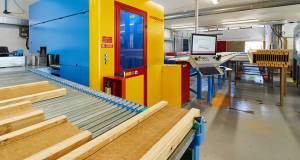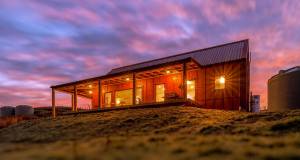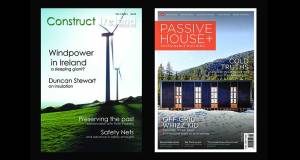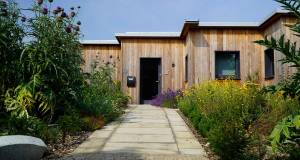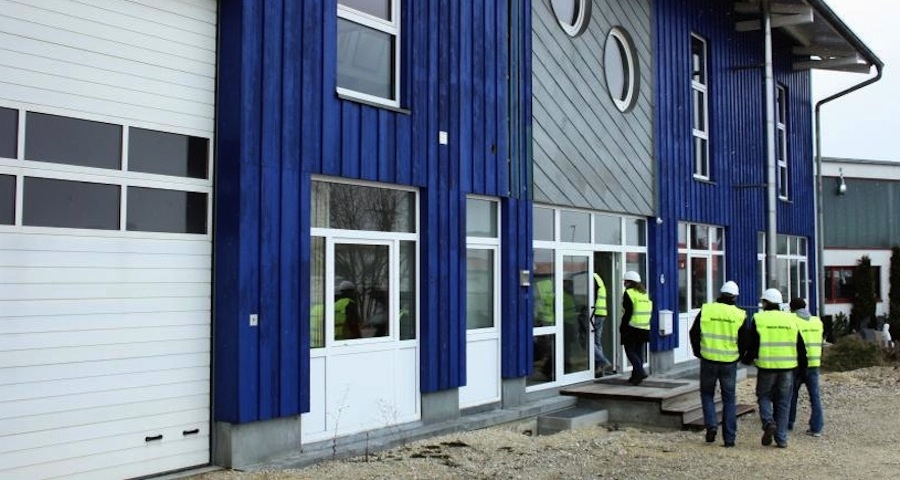
- Blogs
- Posted
Visiting Germany to study low energy building
In this dispatch, Darragh McKiernan, a graduate of Sustainable Energy at Cork Institute of Technology, reflects on a two-week visit to south Germany to study energy-efficient building.
There’s no denying how well advanced our German counterparts are in relation to energy efficient construction and design. I come to this realisation perhaps a little later than most in the industry, only having been afforded the opportunity to witness it first hand on a recent trip to Biberach, southern Germany. This charming, rural town is home to the Kompetenz Zentrum Holzbau & Ausbau, a centre of excellence for timber frame construction, which I and 23 others called home for the duration of our two week stay.
Having been organised by CIT through the Leonardo da Vinci Mobility Programme, the group was composed of a mix of different ages and characters, all with varying reasons for being there. Over the course of the two week "PHASE" programme, the blend of motivations became a little clearer, with the overriding theme of interest being energy efficient construction, with an emphasis on the promotion and selling of the passive house concept in Ireland.
The centre itself is regularly visited by Irish groups, as can be seen in the kind words written about the centre's Gerhard Lutz and Anna Strahl in the guestbook by previous Irish guests. One of the first people we met upon arrival to the centre was an Irishman from the previous group who should have been returning home on the plane we flew in on, but who had been forced to stay because of ill health. We quizzed him on how he felt about the course and the content, to which replied simply that it was “enlightening” – a word which would spring to mind on many occasions over our two weeks there.
We knew little of the structure of the two weeks upon arrival in Biberach, bar the few pointers from our ill comrade in reception. All was revealed the following morning however, with the arrival of our timetables and folders. The course was to comprise several days of intense lectures, broken up with a few excursions and visits to local building sites, buildings and companies, both large and small.
One of the more memorable of these excursions began with a trip to a building site which was the property of a local carpentry contractor, Gapp Holzbau. The development was comprised of several apartments, in the early stages of a thorough energy efficient construction. After seeing the work in progress, we were invited to visit the company’s facility nearby, in which the company prefabricated many of the components which we had seen earlier. The simplicity of the factory was impressive, with the most imposing feature being the gantry crane which aided the workers in moving large wall sections and other constructions.
Some things which struck me from this excursion, and the others which followed, was the large knowledge base and passion for the industry shown by all whom we crossed paths with, from the modest setup of Gapp Holzbau to the large Müller Blaustein factory which we visited during the first week also. The stereotypical German efficiency was clear to see all around us also, with every employee, factory and building working as it should. This also was true of our own lodgings at Biberach, with our building providing the essence of thermal comfort, and our lecturers full of a knowledge and passion that began to steadily brush off on us.

Studying production at the Müller Blaustein timber frame factory
The classroom time was spent covering all aspects of passive house construction, from foundation detail to heat recovery systems, and everything in between, with our vast array of lecturers, all of whom had vastly different backgrounds and specialities. One of the more memorable lecturers was Achim Dangel, a master carpenter and a much respected certified passive house designer with many accolades to boot. With Dangel having spent some time in Ireland towards the end of our infamous “boom”, he was the most in touch with practices in Ireland. He left us with much imparted knowledge, including his suggestion to “never believe your supplier” – make informed decisions on materials and suppliers through your own findings.
It wasn’t all lectures and passive house related excursions however, with weekends being free to sample the other fruits of German living. A skiing trip to Odentsdorf satisfied our Alpine wanderlust on the first weekend, with a trip to Stuttgart on our second weekend sufficing to make me lust to be back in Germany again. With the obligatory formalities of such an EU funded trip completed in CIT this week — feedback forms completed and certificates presented — the group looked back on what was a marvellous opportunity and experience. It was for all of us “enlightening”, and something which I would recommend to anyone with an interest in the field, young or old.
Visit www.cit.ie/passivehousing for more information.




